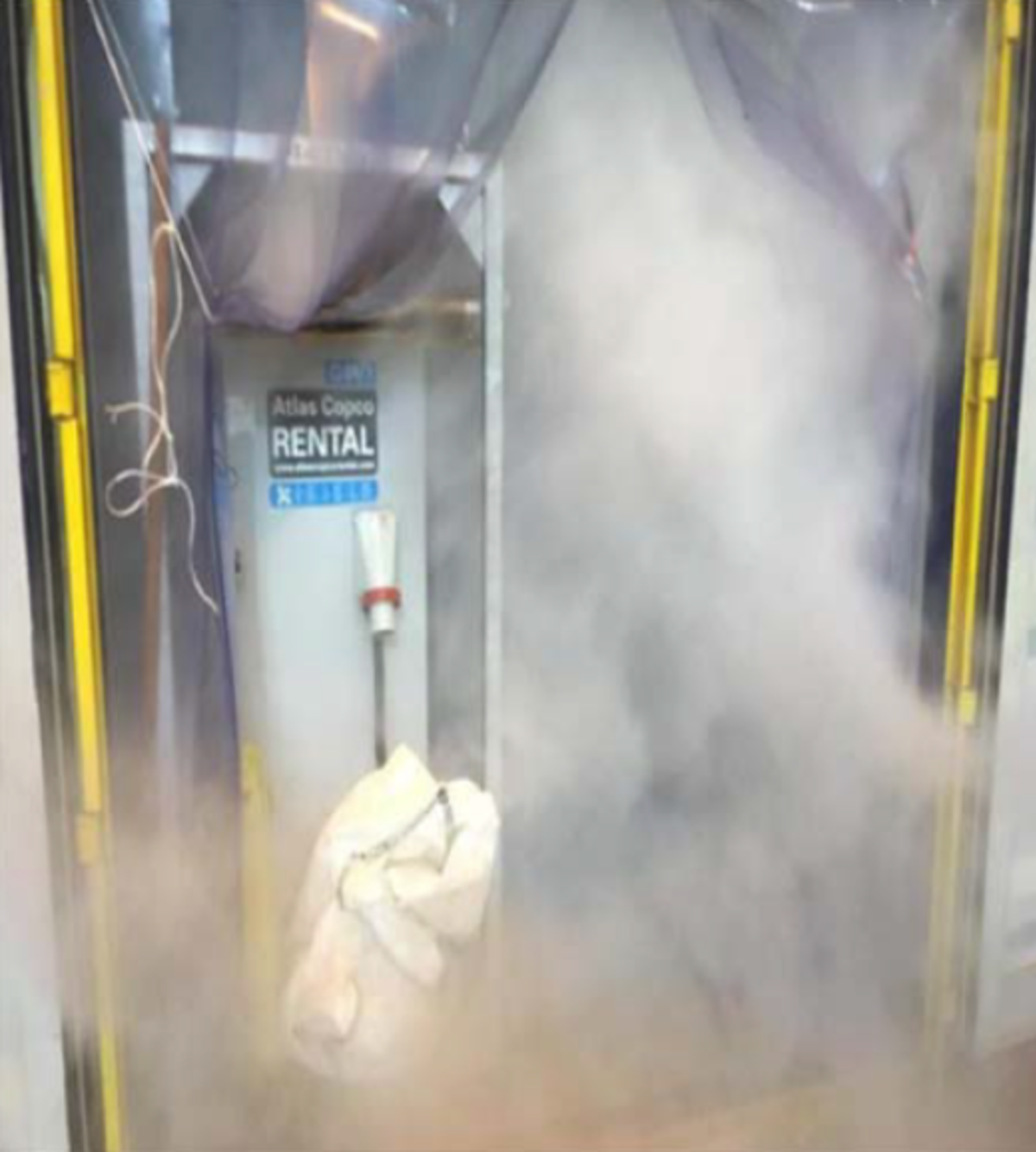Near miss fire – epoxy overheating
- Safety Flash
- Published on 12 August 2019
- Generated on 6 July 2025
- IMCA SF 19/19
- 2 minute read
Jump to:
Smoke was seen coming from a 20′ freight container on the deck of a vessel. The smoke was caused by remnants of used epoxy which nearly caught fire.
What happened?
When the container was opened by the vessel’s fire-fighting team, it found the smoke coming from a number of metal cans containing left over epoxy.

What went wrong? What were the causes?
- When the mixed epoxy containers were put back into the container, they were stored near each other, which meant that the excess heat generated as the epoxy cured, could not be dissipated.
- The freight container was badly ventilated and not suitable for storage of chemicals.
What lessons were learned?
- Chemical storage should always be in accordance with any local regulations.
- Each chemical storage area should have a specific and separate risk assessment.
Our member recommends the following:
- Store epoxy leftovers in metal cans and in small quantities (maximum 2 litres) to avoid the build-up of excessive heat.
- Place cans on a metal drip tray in a well-ventilated area.
- Keep storage area free of any flammable materials.
- Residual epoxy mixture should be observed frequently until the material has cooled down.
- During this curing process, CO2 and water fire extinguishers should be present.

Related Safety Flashes
-
IMCA SF 03/18
31 January 2018
-
-
IMCA SF 17/08
3 December 2008
-
IMCA SF 07/01
1 July 2001
IMCA Safety Flashes summarise key safety matters and incidents, allowing lessons to be more easily learnt for the benefit of the entire offshore industry.
The effectiveness of the IMCA Safety Flash system depends on the industry sharing information and so avoiding repeat incidents. Incidents are classified according to IOGP's Life Saving Rules.
All information is anonymised or sanitised, as appropriate, and warnings for graphic content included where possible.
IMCA makes every effort to ensure both the accuracy and reliability of the information shared, but is not be liable for any guidance and/or recommendation and/or statement herein contained.
The information contained in this document does not fulfil or replace any individual's or Member's legal, regulatory or other duties or obligations in respect of their operations. Individuals and Members remain solely responsible for the safe, lawful and proper conduct of their operations.
Share your safety incidents with IMCA online. Sign-up to receive Safety Flashes straight to your email.